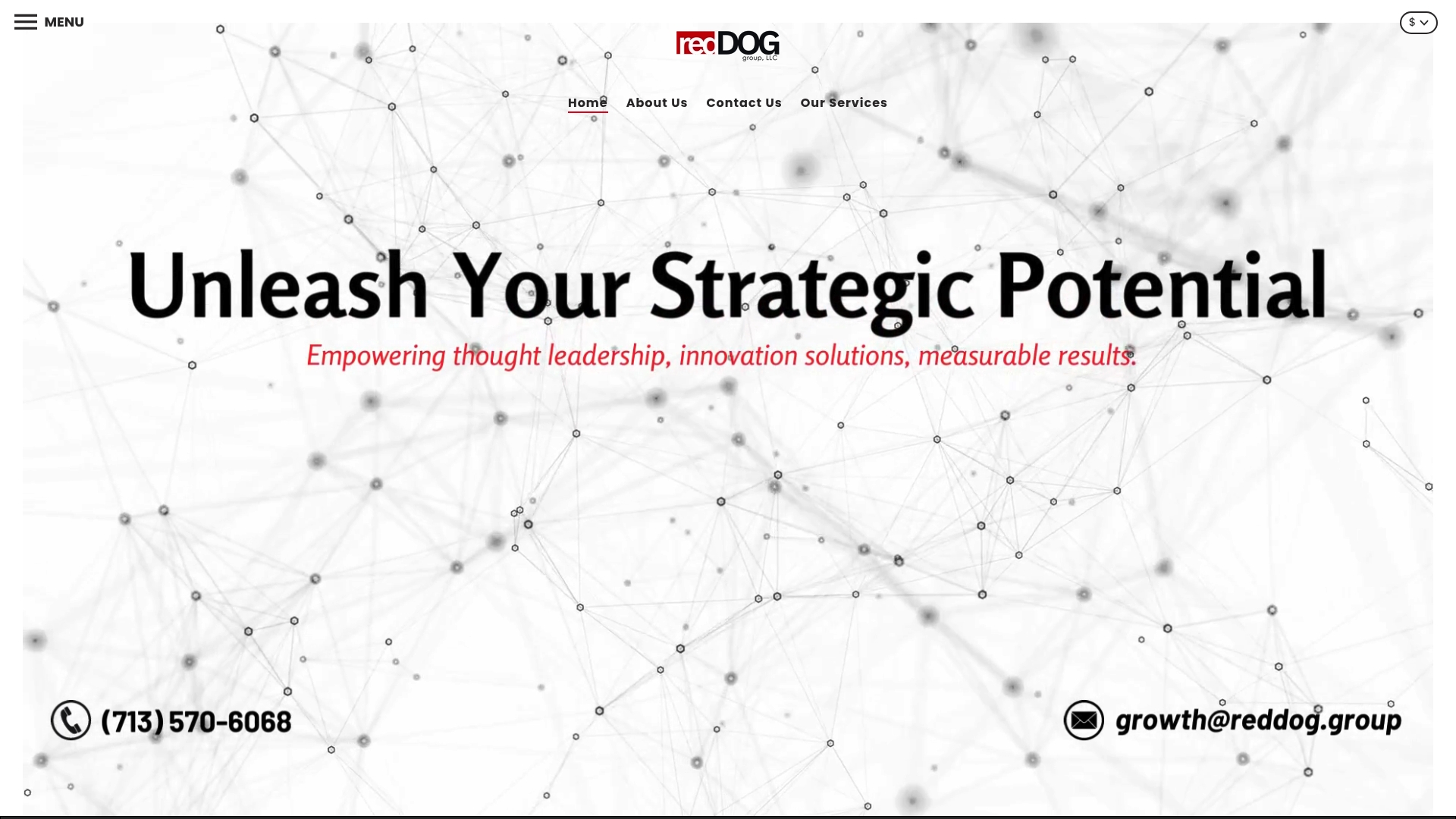
Complete Guide to the Role of Analytics in Business Growth
Posted on
Did you know that businesses using advanced analytics are up to 23 percent more likely to outperform their competitors? Access to the right insights can spell the difference between leading the market and falling behind. By transforming raw data into actionable strategies, organizations turn mountains of information into clearer paths for growth, customer engagement, and smarter decisions that actually move the needle.
Key Takeaways
| Point | Details |
|---|---|
| Data-Driven Decision Making | Business analytics transforms data into strategic insights, enabling informed decisions that drive competitive advantage. |
| Types of Analytics | Organizations utilize descriptive, diagnostic, predictive, and prescriptive analytics to understand current performance, identify causes, predict future outcomes, and recommend actions. |
| Omnichannel Analytics Value | Integrating analytics across multiple channels enhances customer engagement and loyalty, providing a unified view of customer interactions. |
| Challenges in Analytics | Common pitfalls include data fragmentation and algorithmic bias, which require proactive strategies like unified data platforms and robust governance frameworks to mitigate risks. |
Table of Contents
- Defining Analytics And Its Business Value
- Types Of Analytics Used In Business Growth
- How Analytics Drives Retail And Ecommerce Success
- Integrating Analytics Into Omnichannel Strategies
- Common Challenges And How To Avoid Pitfalls
Defining Analytics and Its Business Value
Business analytics is a powerful data-driven approach that transforms raw information into strategic insights, enabling businesses to make smarter, more informed decisions. According to TechTarget, it represents a sophisticated set of disciplines and technologies focused on solving complex business problems through statistical models, quantitative methods, and iterative data exploration.
At its core, business analytics serves as a strategic compass for organizations, helping them navigate challenging market landscapes by converting complex data into actionable intelligence. The process involves multiple critical components:
- Collecting relevant business data
- Analyzing patterns and trends
- Generating predictive insights
- Making data-driven strategic decisions
The true value of analytics emerges when businesses commit to using data as a competitive asset. Understanding why leverage retail insights matters becomes crucial in this context. Successful implementation requires high-quality data, skilled analysts who can interpret complex information, and an organizational culture that prioritizes evidence-based decision-making. Businesses that master analytics can anticipate market shifts, optimize operational efficiency, and create more targeted strategies that directly impact their bottom line.
Ultimately, business analytics transforms data from a passive record-keeping tool into a dynamic strategic weapon, empowering businesses to not just react to market changes, but proactively shape their future.
Types of Analytics Used in Business Growth
Business analytics encompasses several strategic approaches that help organizations transform data into meaningful insights. According to TechTarget, there are four primary types of analytics that businesses leverage for growth: descriptive, diagnostic, predictive, and prescriptive analytics. Each type serves a unique purpose in the data-driven decision-making process.
Descriptive analytics focuses on tracking current key performance indicators (KPIs) to understand the present state of the business. It answers the fundamental question: “What is happening right now?” Understanding why use retail analytics for growth becomes critical at this stage, as businesses begin to interpret their current performance metrics.
The more advanced types of analytics offer deeper insights:
- Diagnostic analytics explains why certain outcomes occurred
- Predictive analytics assesses the likelihood of future outcomes
- Prescriptive analytics generates specific recommendations for action
According to Wikipedia, prescriptive analytics represents the most sophisticated phase of business analytics. It employs complex mathematical and computational models to simulate potential scenarios, incorporating both structured and unstructured data. This type of analytics continuously improves its recommendations as new data becomes available, providing businesses with dynamic, adaptive strategic guidance.
By strategically utilizing these different types of analytics, organizations can transform raw data into a powerful tool for anticipating market trends, optimizing operations, and driving sustainable business growth.
Here’s a comparison of the four primary types of business analytics:
![]()
| Analytics Type | Key Question Answered | Typical Methods | Business Value |
|---|---|---|---|
| Descriptive | What is happening? | KPIs Dashboards |
Tracks performance, identifies trends |
| Diagnostic | Why did it happen? | Root cause analysis Data mining |
Understands causes, improves processes |
| Predictive | What is likely next? | Forecasting Statistical models |
Anticipates trends, informs planning |
| Prescriptive | What should we do? | Optimization Simulation models |
Recommends actions, optimizes results |
How Analytics Drives Retail and eCommerce Success
Analytics has become the cornerstone of modern retail and eCommerce strategies, transforming how businesses understand and engage with their customers. According to Sisense, retail analytics enables real-time decision-making, operational efficiency, and provides deep insights into critical business metrics such as customer lifetime value, demand forecasting, and customer satisfaction.
The impact of analytics is profound and measurable. 7 Effective Ecommerce Growth Strategies for Retailers often highlight how data-driven approaches can dramatically improve business performance. Research from SR Analytics reveals several compelling use cases:
- Inventory Optimization: Reduces stock-outs by 25% and increases sales by 15%
- Personalized Marketing: Generates 40% more revenue through targeted segmentation
- Product Recommendations: Drives 35% of total e-commerce sales
- Dynamic Pricing: Adds approximately 20% to overall revenue
- User Experience: Improves conversion rates (e.g., 1-second faster site speed yields ~2% more conversions)
Moreover, analytics democratizes data across organizational departments, breaking down traditional silos and enabling more collaborative, informed decision-making. By leveraging advanced analytical tools, retailers can transform raw data into actionable insights, predicting customer behaviors, optimizing pricing strategies, and creating personalized shopping experiences that drive growth and customer loyalty.
Ultimately, in today’s competitive digital marketplace, analytics is not just a tool—it’s a strategic imperative that separates successful retailers from those struggling to stay relevant.

Integrating Analytics Into Omnichannel Strategies
Omnichannel analytics represents a transformative approach to understanding and engaging customers across multiple touchpoints. According to Paxcom, this strategy provides a unified view of customer journeys spanning physical stores, websites, and mobile applications, enabling businesses to create personalized, responsive experiences that drive customer loyalty and engagement.
Understanding the Role of Omnichannel Analytics reveals the critical importance of integrating data from diverse channels. A compelling real-world example is Starbucks, which demonstrates the power of integrated analytics:
- Tracked customer interactions across mobile orders, in-store visits, and rewards programs
- Personalized analytics boosted average basket size
- Starbucks Rewards now generates approximately 55% of US revenue
- App users exhibit three times higher customer retention
Successful omnichannel analytics integration requires a comprehensive approach that goes beyond simple data collection. Businesses must develop robust systems that:
- Collect data from all customer interaction points
- Create seamless, interconnected customer experiences
- Use predictive modeling to anticipate customer needs
- Develop real-time personalization capabilities
- Continuously refine and optimize analytical strategies
Ultimately, omnichannel analytics transforms disconnected data points into a strategic roadmap for understanding and delighting customers, turning fragmented interactions into cohesive, meaningful relationships that drive sustainable business growth.
Common Challenges and How to Avoid Pitfalls
Business analytics, while powerful, is fraught with potential challenges that can undermine its effectiveness and strategic value. According to Sisense, one of the most significant obstacles is data fragmentation, where organizational data exists in disconnected silos, leading to inconsistent or conflicting insights that can derail decision-making processes.
7 Effective Ecommerce Growth Strategies for Retailers highlights the critical importance of addressing these challenges proactively. Research reveals several key pitfalls businesses must navigate:
- Data Governance Challenges
- Algorithmic Bias Risks
- Integration Complexity
- Privacy and Ethical Concerns
- Technical Skill Gaps
To mitigate these risks, organizations should implement comprehensive strategies:
- Build unified data platforms that integrate information across departments
- Establish robust data governance frameworks
- Develop rigorous testing protocols to identify and eliminate algorithmic biases
- Invest in continuous training and skill development
- Create transparent, ethical guidelines for analytics deployment
According to research from arXiv, ethical considerations are paramount. Unfair analytics can inadvertently harm marginalized groups and compromise organizational performance. By proactively addressing potential biases and maintaining a commitment to fairness, businesses can transform analytics from a potential risk into a powerful strategic advantage that drives inclusive, responsible growth.
Ready to Turn Analytics Into Real Business Growth?
Has your business struggled with disconnected data or found it challenging to make sense of analytics across multiple sales channels? If you are facing the pain of data silos, unpredictable results, or uncertainty about which analytics strategies will truly move the needle, you are not alone. Many small and medium-sized brands want to unlock the strategic value of prescriptive analytics and omnichannel integration discussed in our Complete Guide, but do not know where to start. That is where a trusted expert can change the game.

Let the team at Reddog Group help you harness the power of analytics for sustainable revenue growth. Our proven experience managing over 50 top brands and 30,000 SKUs shows we know how to break down silos and build unified, actionable data strategies. If you are ready to see how integrated retail and eCommerce solutions can amplify your results, visit our website now. Do not settle for guesses or fragmented insights when you can drive measurable growth with evidence-based, omnichannel strategies—start your analytics transformation with Reddog Group today.
Frequently Asked Questions
What is business analytics and how does it benefit organizations?
Business analytics is a data-driven approach that transforms raw data into strategic insights, enabling organizations to make informed decisions. By leveraging analytics, businesses can anticipate market shifts, optimize operations, and create targeted strategies that enhance competitiveness.
What are the main types of analytics used in business?
The main types of analytics used in business include descriptive, diagnostic, predictive, and prescriptive analytics. Each type serves a unique purpose: descriptive analytics tracks current performance, diagnostic analytics explains outcomes, predictive analytics forecasts future possibilities, and prescriptive analytics recommends specific actions.
How does analytics drive success in retail and eCommerce?
Analytics drives success in retail and eCommerce by providing real-time insights into customer behaviors, optimizing inventory, personalizing marketing strategies, and improving overall operational efficiency. This data-driven approach helps businesses enhance customer satisfaction and increase revenue.
What challenges can businesses face when implementing analytics, and how can they overcome them?
Businesses may face challenges such as data fragmentation, integration complexity, and algorithmic bias when implementing analytics. To overcome these, organizations should establish unified data platforms, robust data governance frameworks, and invest in employee training while maintaining ethical guidelines for analytics usage.
Leave a comment: